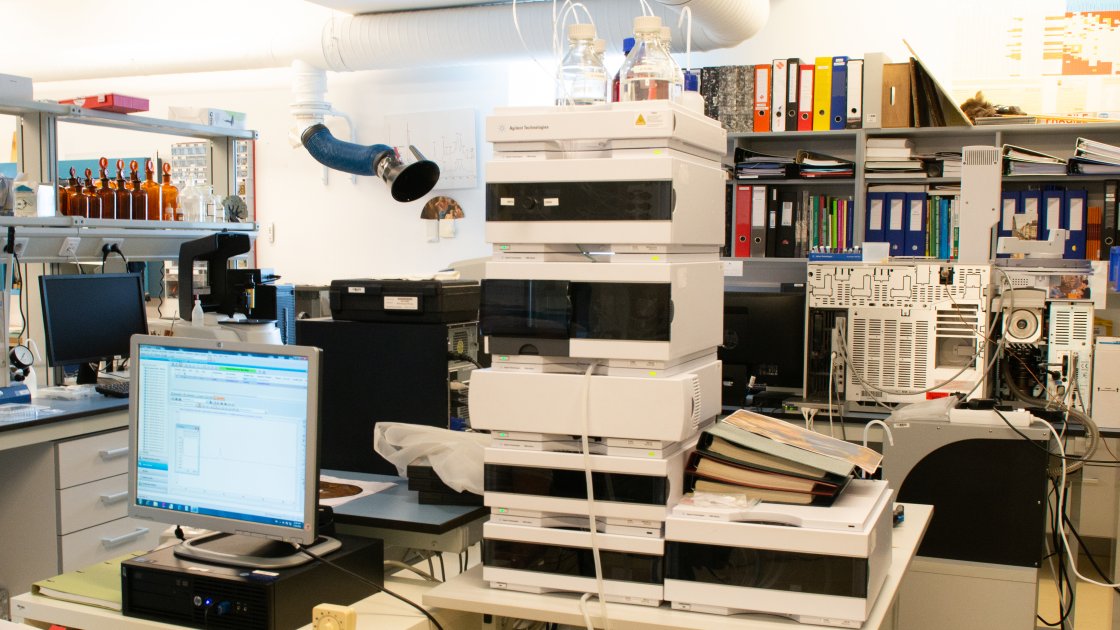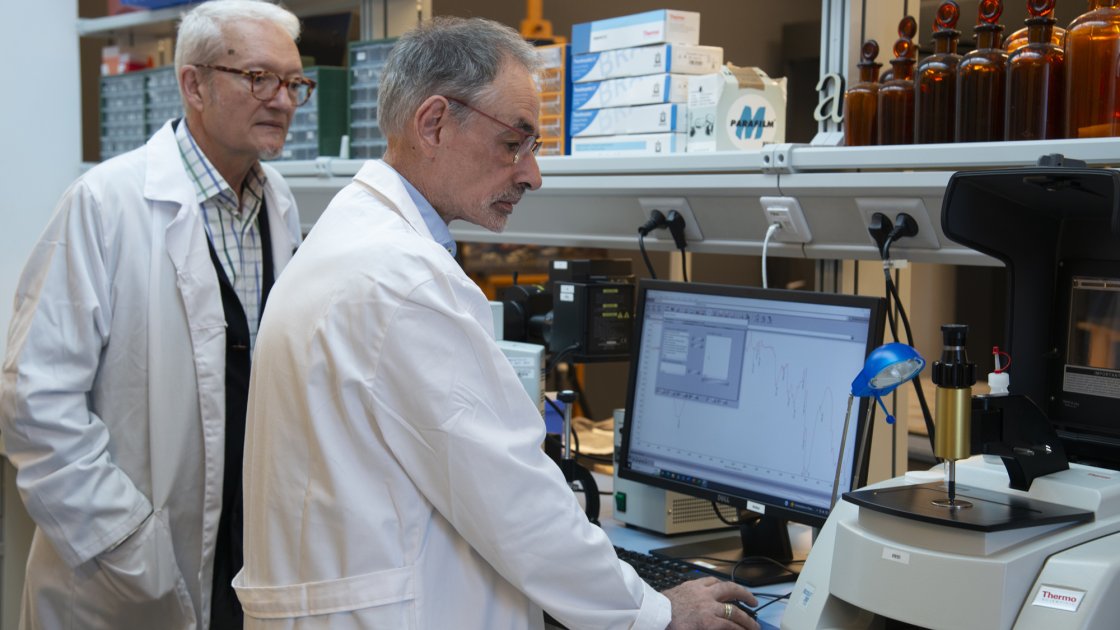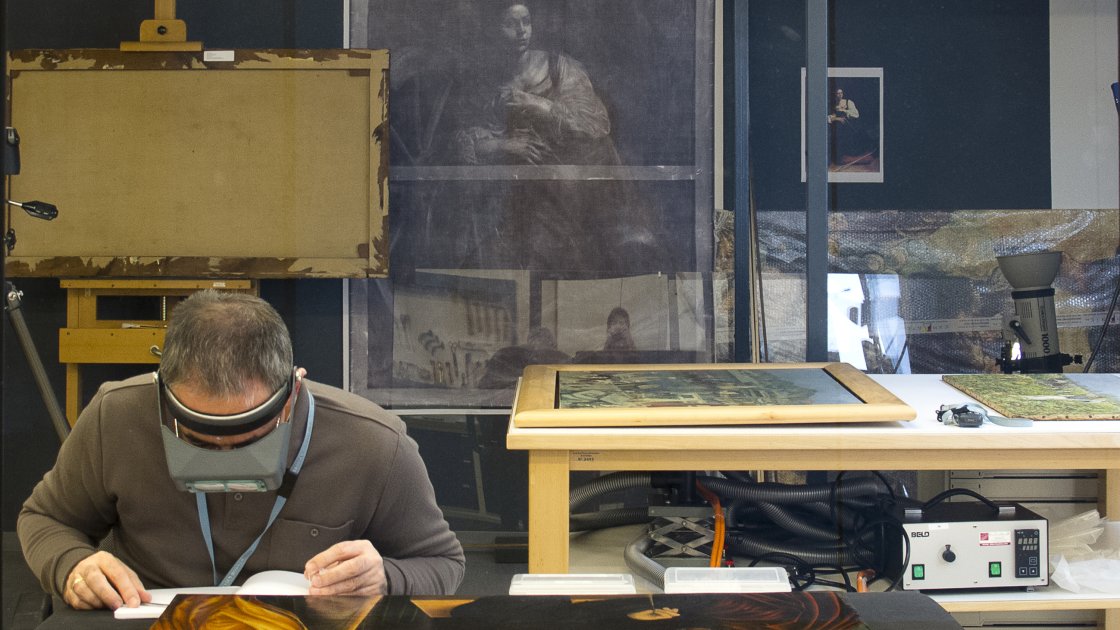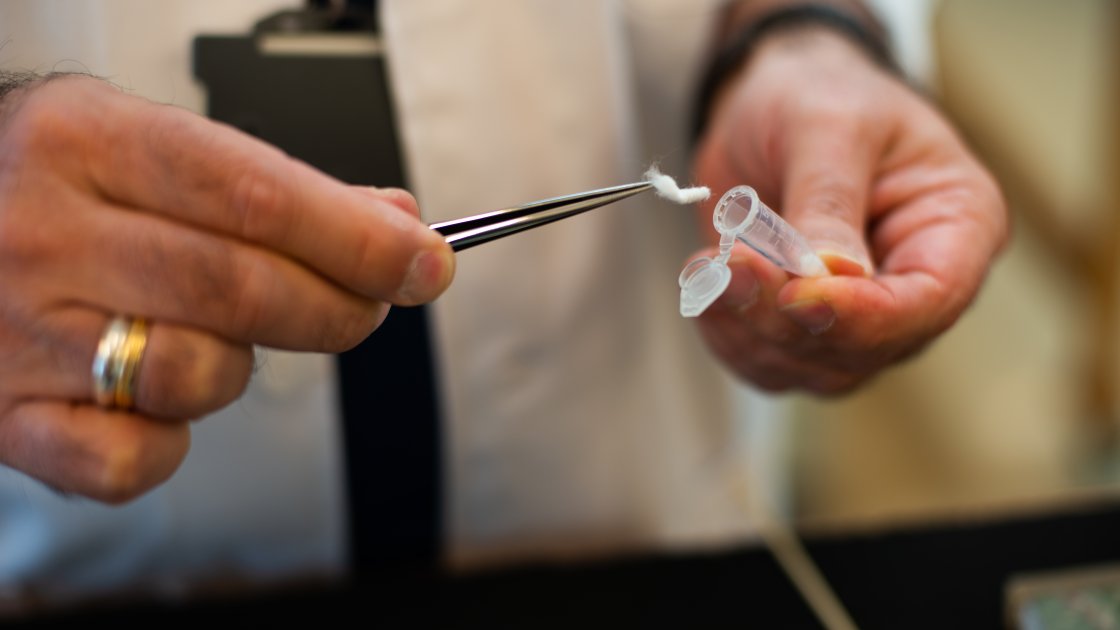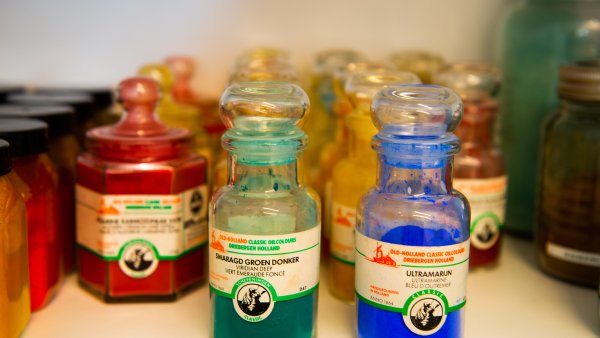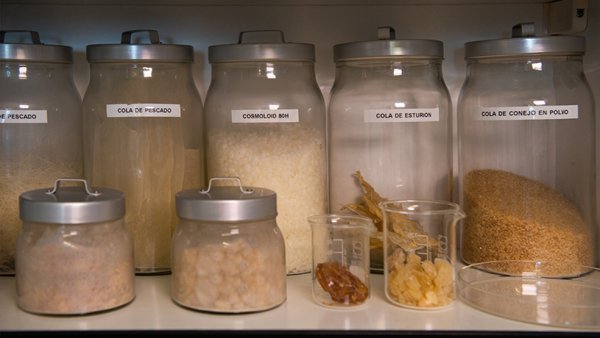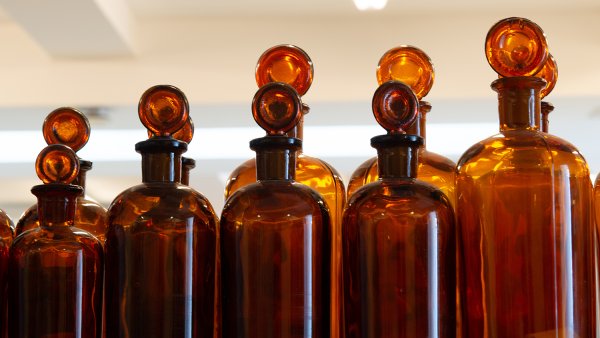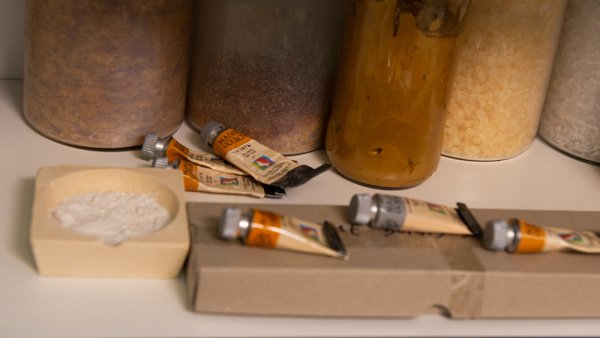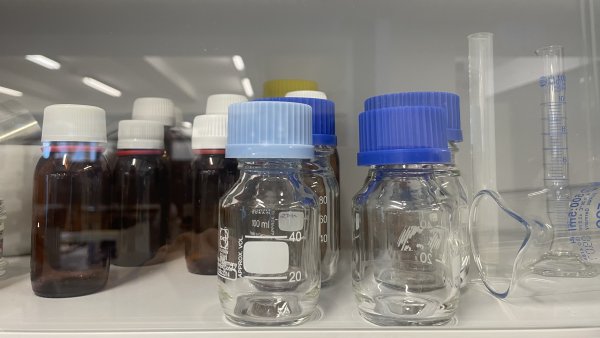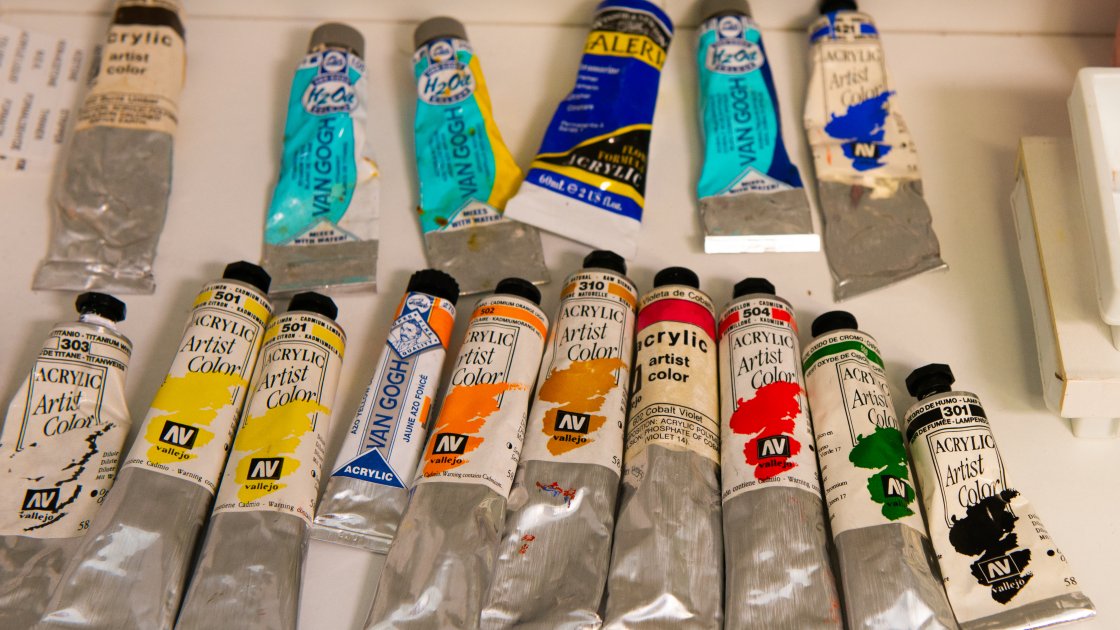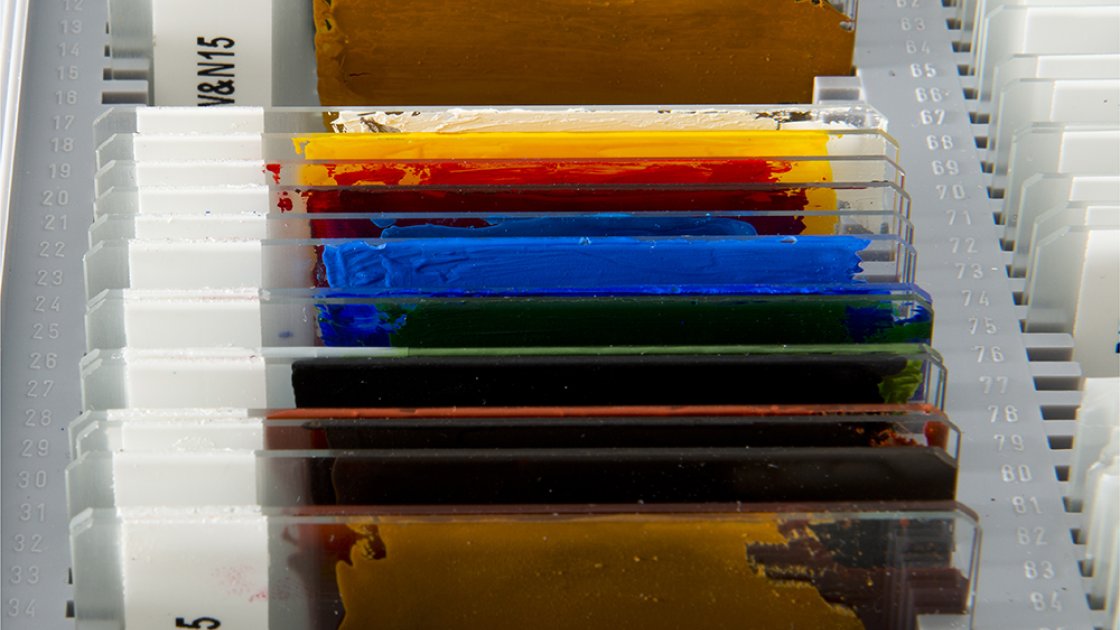Materials Laboratory
The materials laboratory of the Museo Nacional Thyssen Bornemisza owns analytical equipment for conducting techniques such as optical microscopy with polarised light (OMPL), gas chromatography-mass spectrometry (GC-MS), high-precision liquid chromatography (HPLC) and Fourier transform infrared spectroscopy (FTIR), as well as an accelerated ageing chamber for examining the materials used in restoration/conservation work.
Other techniques such as scanning electron microscopy-energy dispersive X-ray microanalysis and pyrolysis coupled to the GC-MS system are performed under agreements with the laboratories of the Museo Nacional de Ciencias Naturales and the Museo Centro de Arte Reina Sofía respectively.
Work lines of the materials laboratory
The laboratory carries out four main lines of work: a protocolised analytical service for all artworks on which restoration is begun; material research as part of technical studies conducted on paintings; studies of the quality of the products used in restoration; and a contribution to monitoring restoration materials and procedures, such as assessing the risk of cleaning painted surfaces.
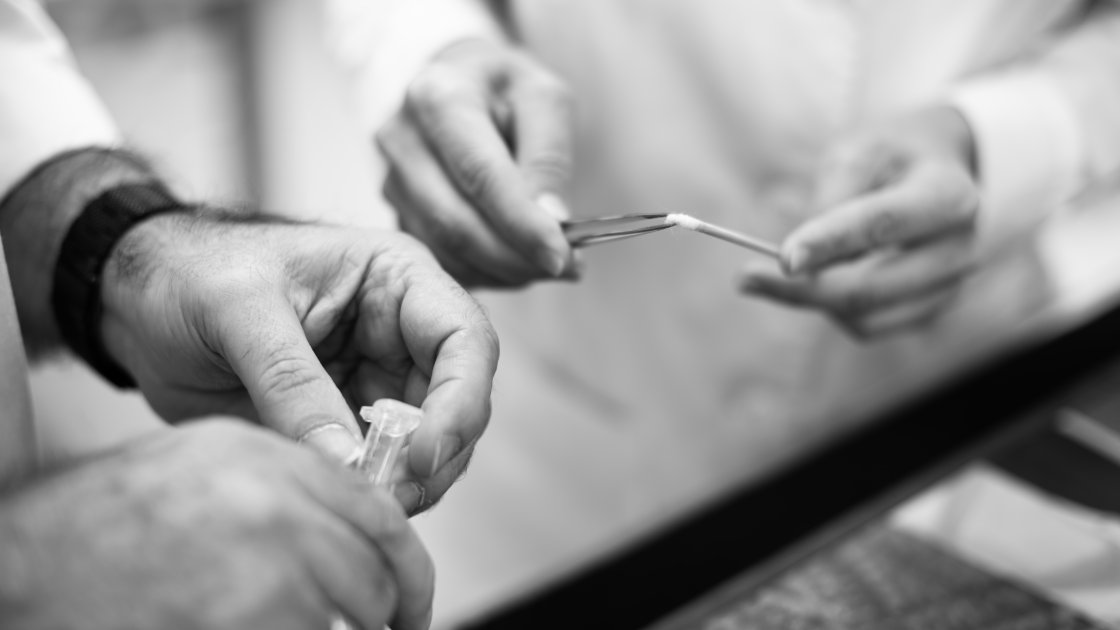
Research projects
The laboratory plays an active part in various research projects
The restoration department’s laboratory catering to the demands of the museum’s team of restorers and conservators and to other general projects also related to the restoration, conservation or study and documentation of artworks. Other institutions of major importance in the field of scientific research on cultural heritage are involved in the latter tasks.
The results of multidisciplinary work combining research on the material, technical, stylistic and formal characteristics of the pieces are of great interest. The aim of these studies is to broaden our overall knowledge of paintings, adding a scientific perspective to tasks traditionally carried out only by experts.
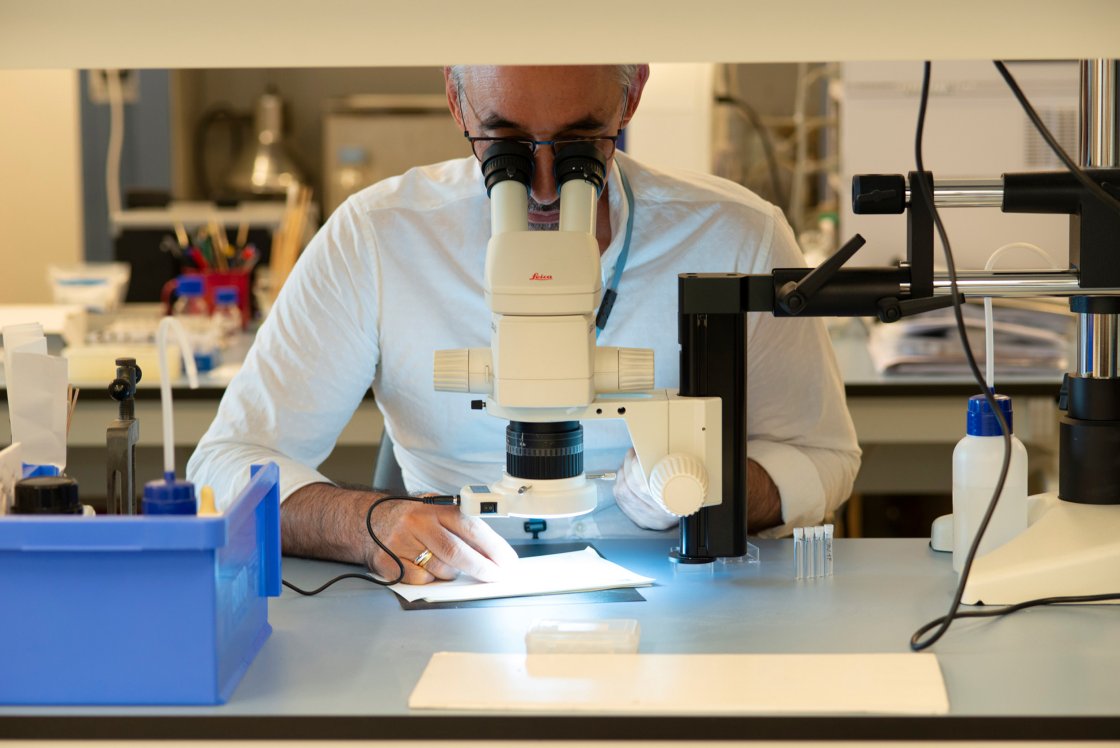
Technical bulletin
Most relevant results and advances
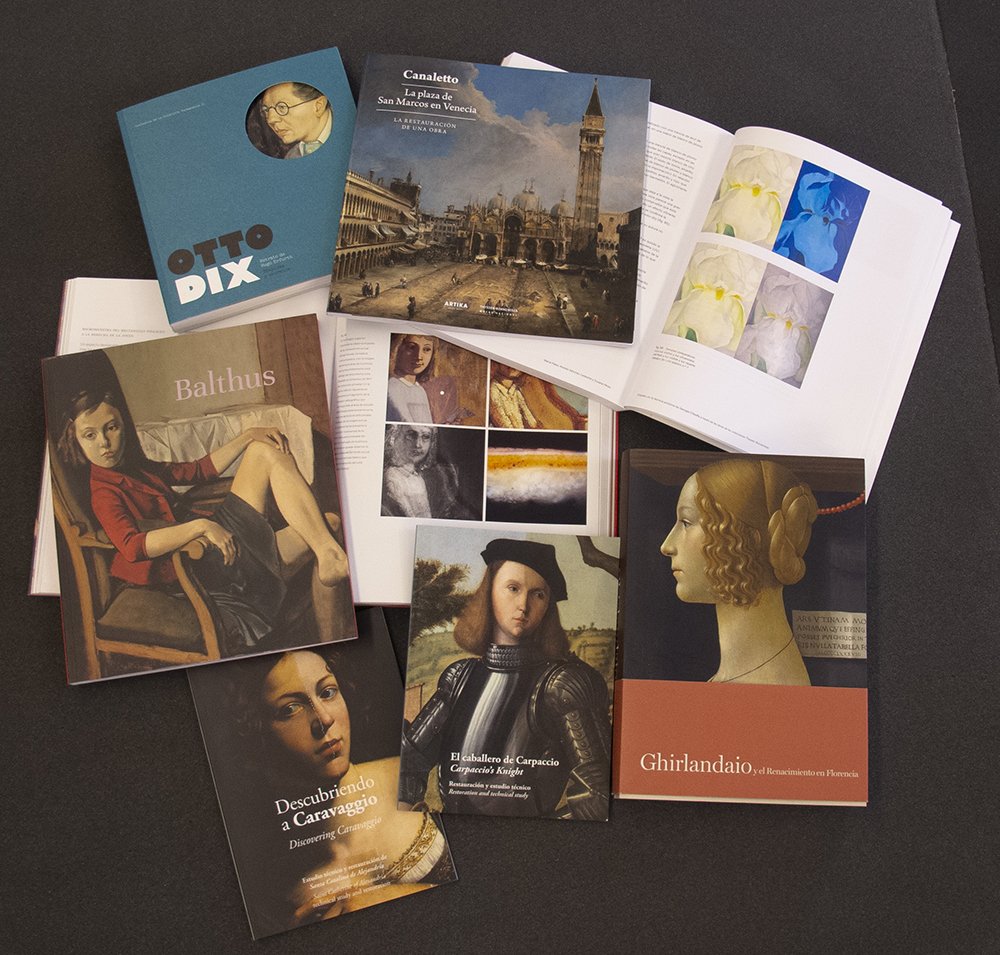
This section presents the most important results in the form of specific, structured information about the progress made in the studies conducted as part of the materials laboratory’s different lines of work.
It provides information about the research carried out by our team, reporting on issues and international trends in technical studies, new technologies for analysing and studying artworks and possible causes of deterioration, as well as priorities in the conservation and restoration of paintings.
Technical specifications: Materials
Commercial products used in restoration
The technical specifications of the commercial materials used in restoration are listed by function (pigments, adhesives, binders, consolidants and varnishes) and origin (natural or manmade). This space contains the information supplied by manufactures and distributors, as well as bibliographic references on their use and properties. It shows the analytical results of material characterisation through the different analytical techniques available in the materials laboratory.
A line of work has furthermore been developed to study variations in the physical or chemical properties of the materials used in restoration, whose results are recorded in factsheets or publications produced by the restoration team and the museum’s laboratory, as well as in collaboration with other institutions.

